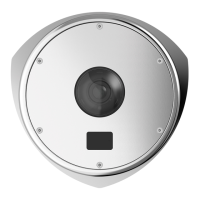
Do you have a question about the Axis Q8414-LVS and is the answer not in the manual?
| Model | Q8414-LVS |
|---|---|
| Camera Type | Fixed Dome |
| Environment | Indoor |
| Form Factor | Dome |
| Sensor Type | CMOS |
| Lens | Fixed |
| Minimum Illumination | 0 lux with IR |
| Frame Rate | 30 fps |
| Day/Night | Yes |
| Audio | Two-way |
| Vandal Proof | Yes |
| Ingress Protection | IP66 |
| Vandal Resistance | IK10 |
| Resolution | 1280 x 960 |
| Type | IP Camera |
| Compression | MJPEG |
| Ethernet | 10/100 Mbps |
| Power over Ethernet | Yes |
| Operating Temperature | 0 °C to 50 °C |
| Field of View | 105° |
Identifies camera unit, connectors, buttons, and other physical parts.
Steps to access the product's interface using a web browser.
Procedure for setting the initial administrator password.
Explanation of interactive controls on the Live View page.
Methods and configurations for streaming H.264 video content.
Other methods to access video streams, such as still JPEG or Windows Media Player.
Ways to access audio streams, including VAPIX and Windows Media Player.
Essential initial configuration steps before product use.
Configuration for video streams, including image, H.264, MJPEG, and profiles.
Detailed settings for H.264 video compression and profiles.
Advanced image adjustments like brightness, contrast, and white balance.
Controls for motion blur, noise, and light sensitivity.
Defining specific areas of the video feed for independent settings.
Creating masks to hide sensitive areas within the video feed.
Configuration for camera focus and zoom levels.
Configuration for audio input, output, and modes.
Setting up motion detection using include/exclude windows.
Adjusting object size, history, and sensitivity for motion detection.
Configuring alarms based on audio levels rising or falling.
Defining conditions and actions for event triggers.
Methods for searching and filtering recorded video files.
Viewing, playing, downloading, and removing recordings.
Configuring the product to continuously record video.
Managing user access, IP filtering, HTTPS, IEEE 802.1X, and certificates.
Managing SD cards, formatting, and network shares for storage.
Managing ports, performing maintenance, and accessing support resources.
Addressing symptoms like IP conflicts, login issues, H.264 streaming, and storage problems.